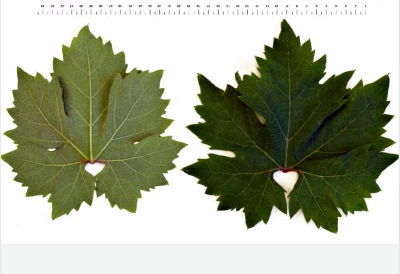
- Authors: Yugoslavia
- Appointment: technical
- Berry color: dark purple
- Ripening period: mid-late
- Frost resistance, ° C: -22
- Name synonyms: Primitive, Crljenak, Pribidrab
- Flower type: bisexual
- Peeling: Yes
- Density of the bunch: dense
- Berry shape: rounded
The Zinfandel variety is widely used in the production of wines. Due to its unpretentious care and high yield, it is most widespread in California. Currently, dry, sweet, sparkling and table wines are produced from grapes.
Breeding history
The original homeland of red grapes is unknown. The origin of the variety's name also remains a mystery. Later this variety was grown in Croatian nurseries. In 1850, red wine was produced from Zinfandel, which was tasted by a French winemaker. After that, the grape variety came to the United States, after which it spread throughout the state of California. Variety name synonyms - Primitivo, Crljenak, Pribidrab.
Geography of distribution
The culture belongs to the group of Western European varieties. The main growing countries are southern Italy, the USA and Croatia. And also grapes can be found in the provinces of South Africa.
Description
The bush is quite vigorous. Leaves are medium in size, five-leafed, deeply cut, with pubescence on their lower part. The main feature is the uneven ripening of the berries. The variety is prone to peas.
Ripening period
The grapes are mid-late ripening.
Bunches
The bunches are medium, rather dense, conical in shape. Due to their strong density, the berries tend to rot and deteriorate.
Berries
The grapes are small, round in shape. The color of the berry is dark purple. They have a short peduncle. The peculiarity of berries is that they have a large sugar accumulation, up to 300 g / dm3. The top of the fruit is covered with a waxy bloom. Thanks to this, the crop tolerates storage well.
Taste
The taste of berries is sweet and rich. A slight sourness is felt.
Yield
Zinfandel - has a high yield. There is often a second crop that ripens on stepchildren in very hot climates. A bush of grapes can produce up to 10 kg of berries per season.


Growing features
The variety is very unpretentious to climatic conditions. Any soil is suitable for growing it. An important criterion for the growth of grapes is the abundance of sunlight, as well as good protection of the growing area from the wind.
Landing
The plant is planted in May, after the frost has ended. Before planting the bushes, it is necessary to feed the soil, this guarantees a large harvest. A strong, intact seedling is placed in the hole and sprinkled with earth. After that, the soil is watered abundantly.

Pollination
Culture refers to a bisexual plant species.
Pruning
The plant needs sanitary pruning. It is carried out regularly so that the bushes do not grow and bring a good harvest. If the winter period is very harsh, then pruning is done in the spring.

Watering
Vine bushes love abundant watering in very dry weather. If the climate is cool and not dry, the amount of soil moisture should be controlled. It is important to avoid excess moisture.


Top dressing
Every year the culture needs a variety of feeding. Before the first buds appear, the bushes are recommended to be treated with copper sulfate. This prevents attacks from pests. In the middle of summer, fungicidal dressings are applied. For the winter period, they are treated with iron sulfate.
Frost resistance and the need for shelter
The variety tolerates winter well, if the temperature does not drop below -22 degrees. If the climate is more severe, the crop must be protected with agrofibre.

Diseases and pests
Grape bushes can be susceptible to some diseases.
Mildew. This disease causes great harm to the plant. When it occurs, the leaves of the bush and the crop itself are affected.
Oidium. Berries and inflorescences suffer from this disease.
And insects can also harm grapes. These can be wasps and felt mites.

If a grape is exposed to any disease or insect, this always affects its appearance.
Storage
The grapes are well stored in the refrigerator at a temperature of +2.4 degrees. In large quantities, the crop is sent for storage in a cool cellar. Can be stored in boxes or hanging.
Well-known winemakers recommend trying varietal wines from Zinfandel. They are very rich, aromatic, tart.











































































